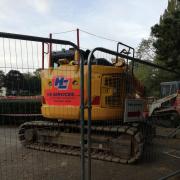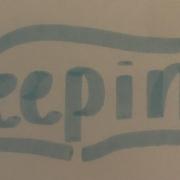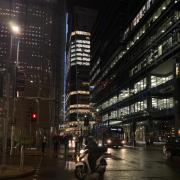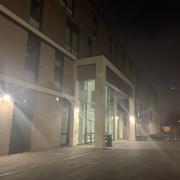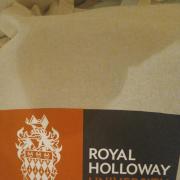
Graffiti is viewed by many as vandalism or defacing. However, what people may not be aware of is that war carvings on castle walls, which are important to them, for example, is also graffiti. Most people view this as a poignant reminder of past wars and find it a way to understand better the effect of being kept prisoner for long periods of time in squalid conditions, and a brilliant example of this is the French prisoner graffiti in Portchester Castle, Portsmouth.
Graffiti, in some peoples’ eyes, is just defacing an important site, the site usually being solely important to them or relatives. In this way, it can be seen as detrimental to a local society, however not to the larger society of, say, Croydon, if one wall of a shop building was graffitied most people would like it whereas the shop owner may object to it.
More importantly, graffiti on a statue or memorial is very much detrimental to the wider society, for example if the memorial to the Newfoundlanders who fought in World War One, in France, was defaced, this would have a comparatively larger effect on society than graffiti on a shop wall, i.e. all/ most Newfoundlanders would be upset that their tribute to their country was treated in such a bad way compared to one or two upset shopkeepers.
However, some graffiti can add colour and character to a place, seen a locally as in Croydon, and less locally at Shornemead Fort (however there is debate here as to whether the graffiti is good or not, while I personally see nothing wrong with it, others do). The graffiti in Croydon has been a massive hit with the local society and communities, for there is even a “graffiti trail” around Croydon.
A new type of graffiti, guerrilla graffiti, is not so much paint but more stickers on London Underground trains, placed over stations on the maps, or warning notices and priority seat notices. Most people seem to like these stickers and the often brighten up your day.
Similarly, graffiti that mocks current politics, for example, is generally viewed as satirical rather than a direct attack on politics, for example at Coalhouse Fort, Essex.
However, graffiti does not come without its risks, as was shown on the 18th June last year, when three young males died after being killed hiding from an oncoming train after graffiting nearby. This being said, I personally think that, despite the “thrill” people get from graffiting dangerous places, they should not be going to places like that in the first place. It is something which can be done and enjoyed in safer places and people should have second thoughts on whether to graffiti somewhere like that.
Nowadays, graffiti is utilised as a modern art form, and the artists that do it are conscious of where they choose to graffiti. It is very dependent on who it is you ask, for example more elderly people may not like graffiti because it has ruined a sentimental area to them, whereas younger people like it because perhaps they have no fond memories of the area, and it brightens the place up a bit.
To sum up, graffiti can be detrimental to the society and communities, however I think that if it were done sensibly, say on hoardings around building sites, it would have a negligible or even beneficial impact on the wider society and community, and therefore is not detrimental when it is thought over first, i.e. deciding sensible places to graffiti.














